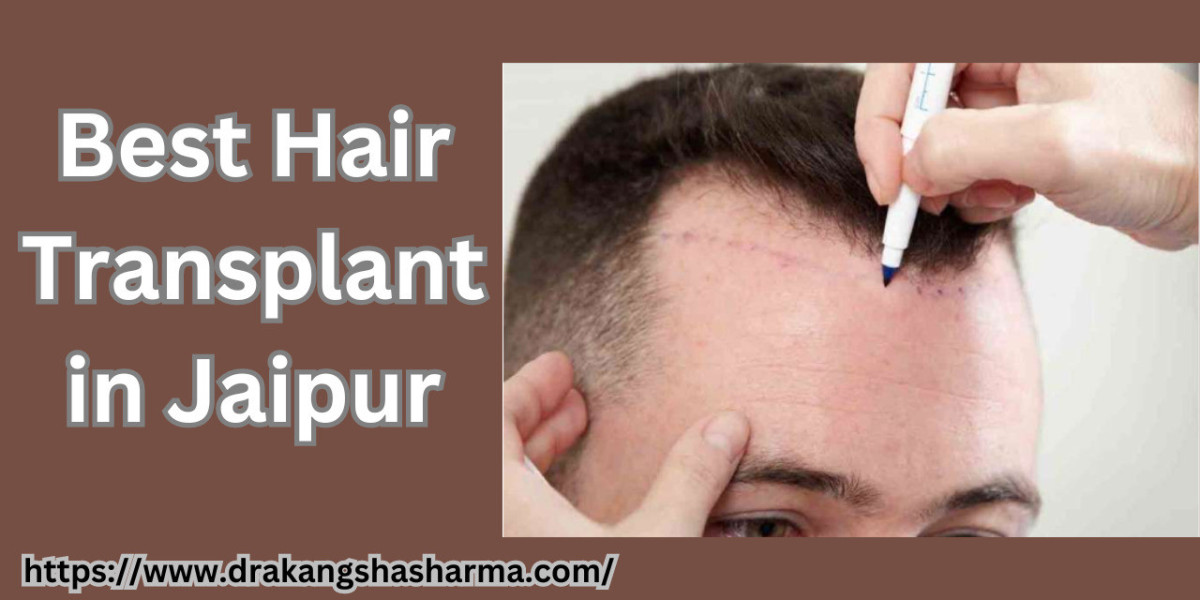Experiencing hair shedding after getting a hair transplant? Well, calm down; there is no need to worry! Although many patients worry when they start to shed their newly transplanted hair, it is important to keep in mind that this is a temporary phenomenon that will go away as the new hairs start to grow in.
In this article, we will explore in detail about the reasons for hair shedding after getting a hair transplant surgery. To article insights are shared by Dr. Akangsha Sharma, a renowned hair loss doctor, known for offering the best hair transplant in Jaipur.
What is Shock shedding and Effluvium?
Shedding of transplanted hair, also known as shock shedding and effluvium (a medical term), is thought to be a normal side effect of any hair transplant surgery, regardless of whether follicular unit extraction (FUE) or follicular unit transplantation (FUT) is performed.
This is primarily because a graft is temporarily deprived of its blood supply. This transplanted hair shedding typically starts one week after surgery and lasts for approximately six weeks. The degree of hair loss a patient is likely to endure following hair transplantation is also largely determined by genetics.
Why Does Hair Shed After Surgery?
There are three phases to the growth cycle of hair: the growth, transition, and resting phases. When the roots are in their resting phase, they lose their hair. After undergoing surgery, hair may enter the resting phase. During hair transplant surgery, the hair undergoes the following major traumatic events:
The hair follicle is detached and its blood supply is cut off.
The hair follicle is being re-implanted into the scalp.
Anesthesia and incisions affect the surrounding hair.
Following a hair transplant, the attached hair and the implanted follicles will remain in their new location for one to two weeks. During this time, the follicles will begin to enter a resting phase and start to shed their hair. After transplantation, this shock loss may begin as soon as ten days later. It may continue for twelve weeks. Three months after hair transplant surgery, the lost hair begins to grow back. After that, the patient could anticipate good growth in the following months, with the end result becoming visible eight to twelve months following surgery.
Therefore, hair shedding is a normal process and does not indicate that the scalp is "rejecting" the grafted hair.
Is hair shedding after a hair transplant normal?
Yes. During the healing phase following a hair transplant, it is quite common for transplanted hair to shed. In fact, there are three different kinds of hair loss that one could encounter:
Transplanted hair shedding
Non-transplanted hair shedding
Donor area shedding
Let us examine each kind of hair transplant shedding in more detail.
Transplanted Hair Shedding
Transplanted hair shedding is among the most prevalent forms of hair loss that occur in the weeks and months after a hair transplant. Although this may seem odd, one should not be concerned because the body is not rejecting the grafts. As the transplanted hair enters the telogen phase of its growth cycle, one will experience transplanted hair shedding.
Non-Transplanted Hair Shedding
Following a hair transplant, some patients may notice that even their non-transplanted hairs start to shed. If a person has many tiny or thin hair that overlap newly implanted hairs, there is a greater chance that they will shed non-transplanted hair. These natural, non-transplanted hair also shed because, after the trauma of surgery, their follicles enter a resting phase, just like transplanted hairs do. Shock loss of non-transplanted hair can happen as soon as two weeks after surgery or even months later. This is an uncommon process that resolves on its own and every hair that has fallen out ought to grow back.
Donor Area Shedding
Patients very rarely experience shock loss in the donor region. This phenomenon is uncommon, particularly in cases where a skilled hair transplant surgeon performs the procedure on the patient. However, if it happens, the hair should regrow after a brief period of donor hair shedding.
When Will the Hair Start to Regrow After Hair Shedding?
Most patients experience their first growth three months after the onset of post-transplant shedding. The full regrowth may take longer to manifest. After about six months following the best hair transplant in Jaipur, one can start to notice noticeable increases in hair density.
What Happens If A Person Experiences No Shedding After A Hair Transplant?
In the event that there is no shedding following transplantation, it means that the grafts have not transitioned to the telogen phase of hair growth but have remained in the anagen (growth) phase. That is good news because it could mean one can skip the unlikable hair shedding phase after hair transplantation.
In any case, there is no need to worry. The hair transplant is likely to be successful if, within six to nine months, one begins to notice some degree of sustained growth.
How Can One Manage Post-Transplant Shedding?
Patients can lessen the effects of shock shedding by adhering to their healthcare professional's post-procedure instructions and steering clear of activities that could put further strain on their scalp. This includes avoiding overheating, harsh chemicals, and tight hairstyles. Patients should also make sure they use topical solutions according to directions and take any medications that have been prescribed by their doctor.
There is currently no method to totally eliminate the chance of shock loss following surgery. However, patients can stop further loss by taking minoxidil or finasteride. Finasteride reduces the amount of dihydrotestosterone in the scalp. This thickens hair and stops hair loss for a lot of people. Minoxidil can be applied to thicken thinning sections of the hair. However, these solutions and medicines should be taken after discussing them with the doctor.
Conclusion
One should not be concerned if they experience shock-shedding as it is a common aspect of hair transplantation. It is important to keep in mind that the hair follicles are still intact and that the shedding is only temporary, even though it can be disturbing. Patients can manage the shock-shedding process and guarantee positive outcomes by adhering to their doctor's post-procedure instructions and avoiding activities that might put additional stress on the scalp.
If one has any doubts they can get in touch with an experienced hair transplant surgeon and the best cosmetic surgeon in Jaipur, at AK Aesthetics. Dr. Akangsha Sharma, the founder of this clinic, is a well-known cosmetic surgeon with experience performing hair transplantation, and various cosmetic surgeries, including, rhinoplasty, facelift, tummy tuck, liposuction, blepharoplasty, and many more.
For more details and to make informed decisions regarding the procedure, visit the clinic today.















